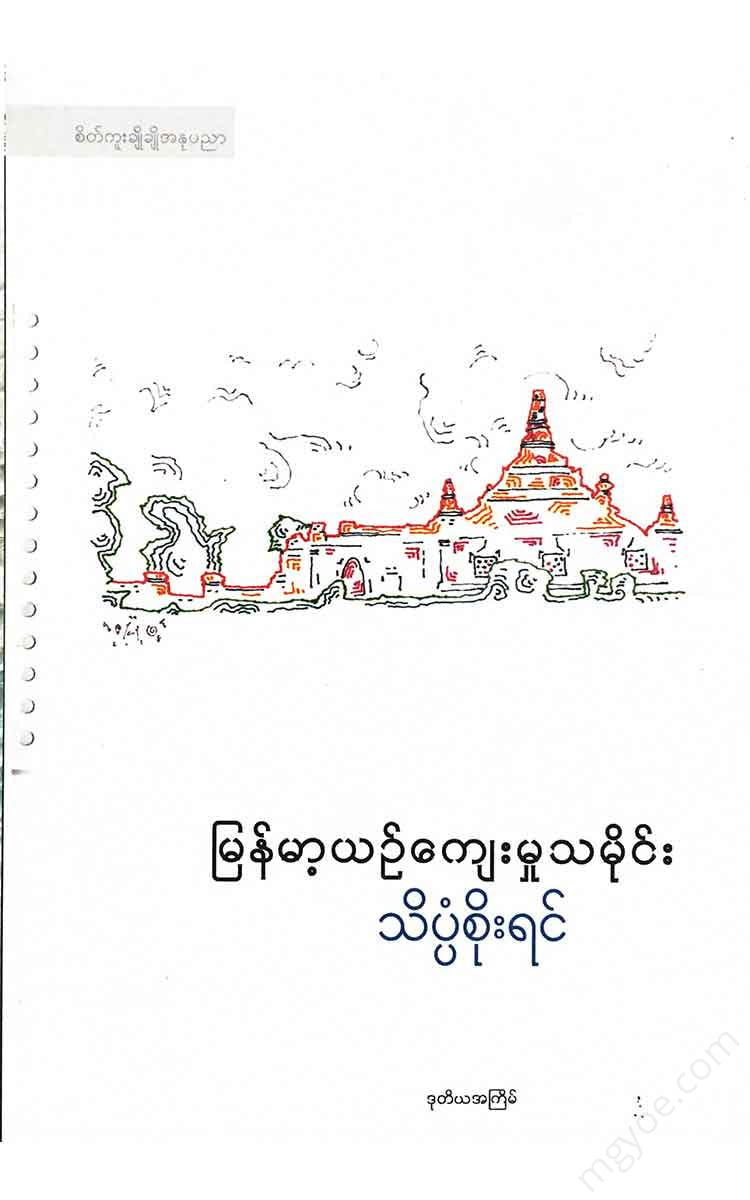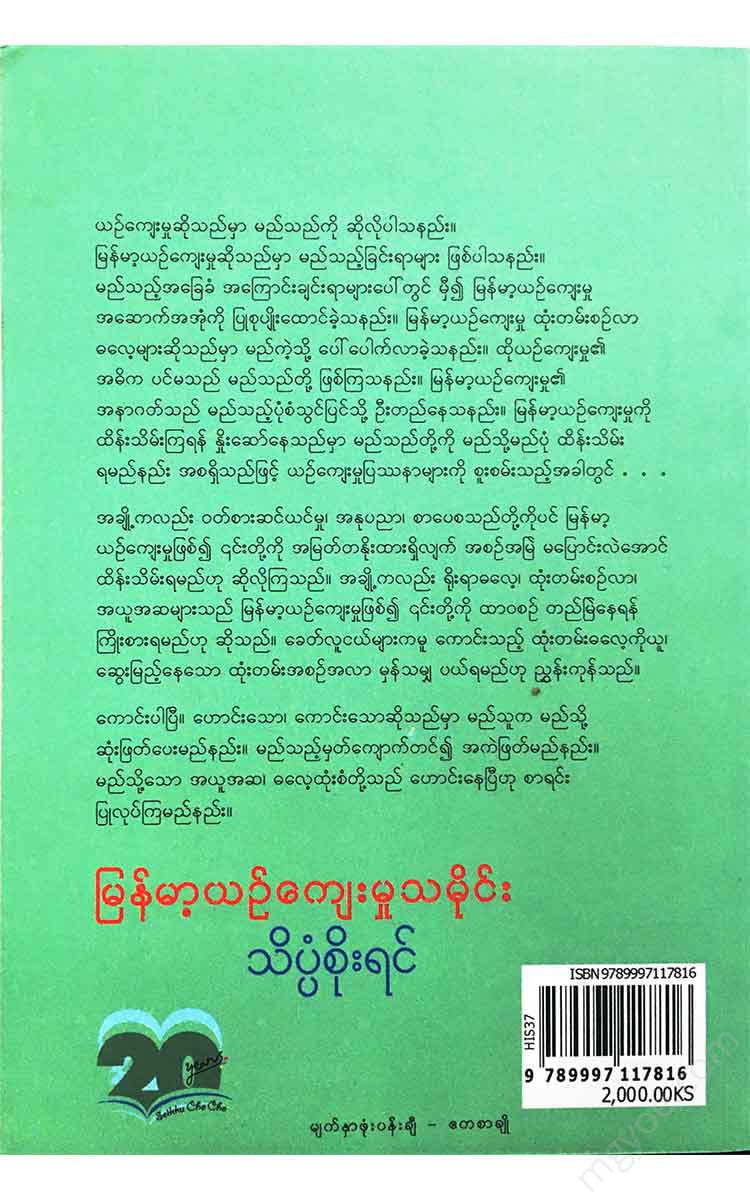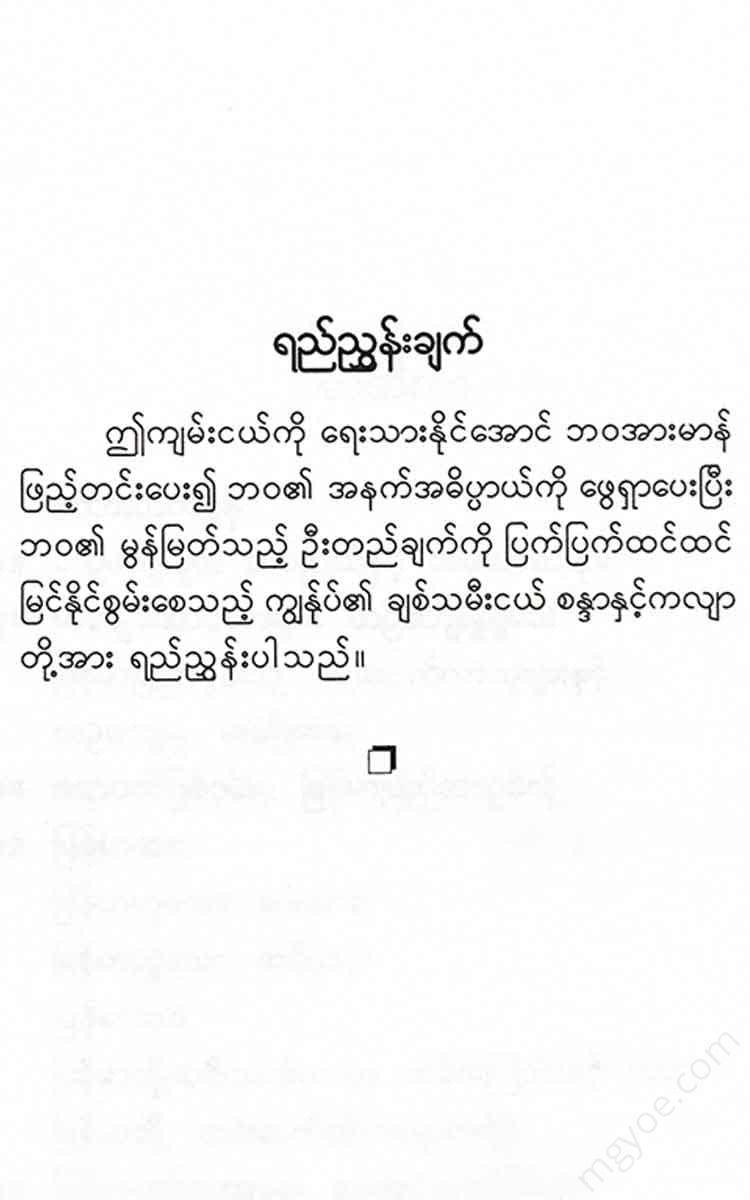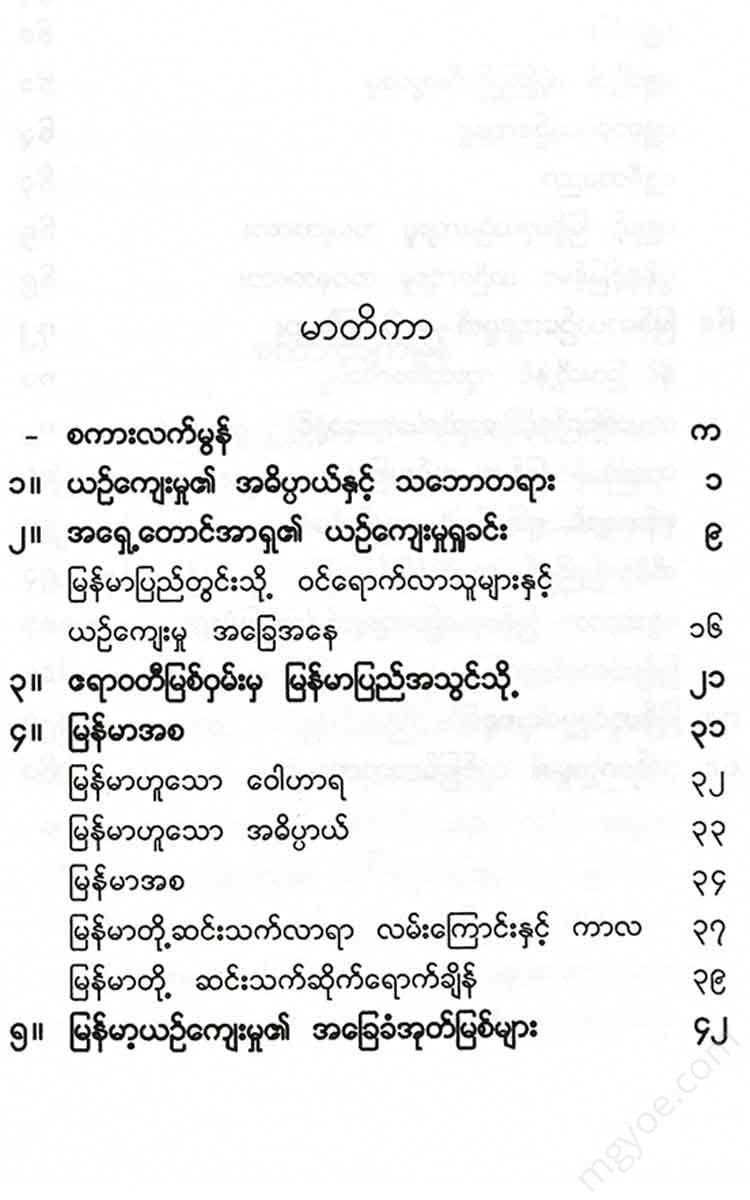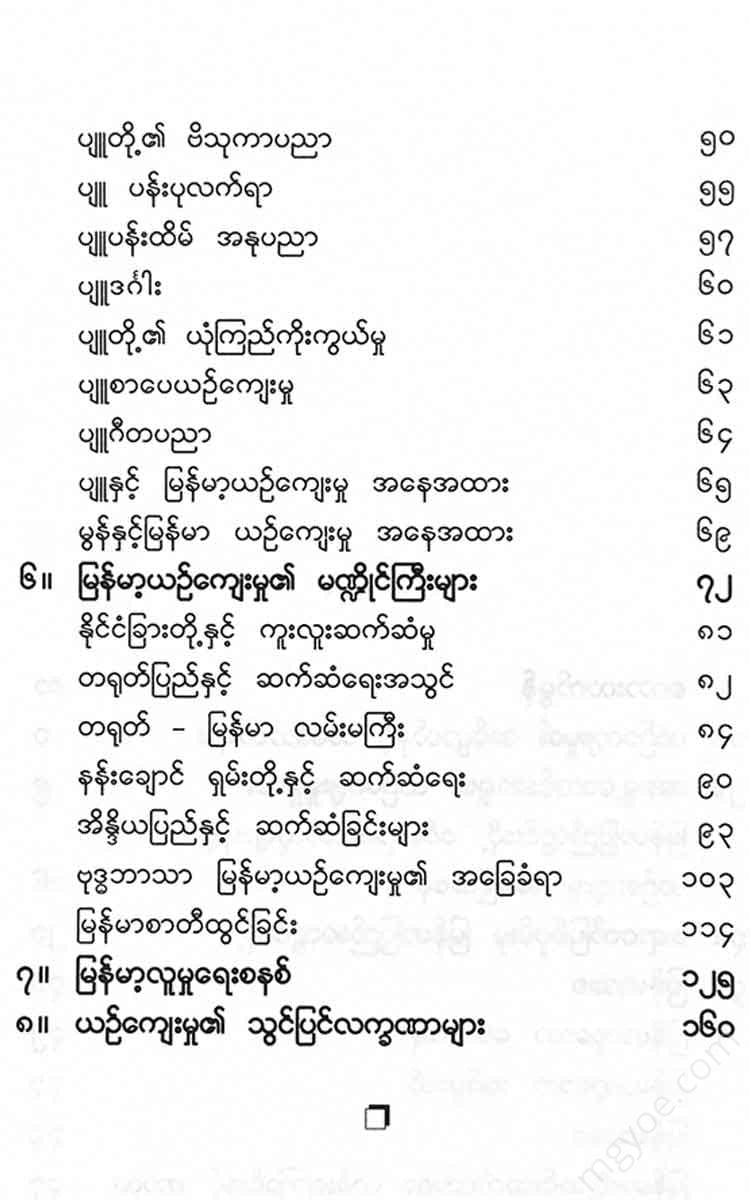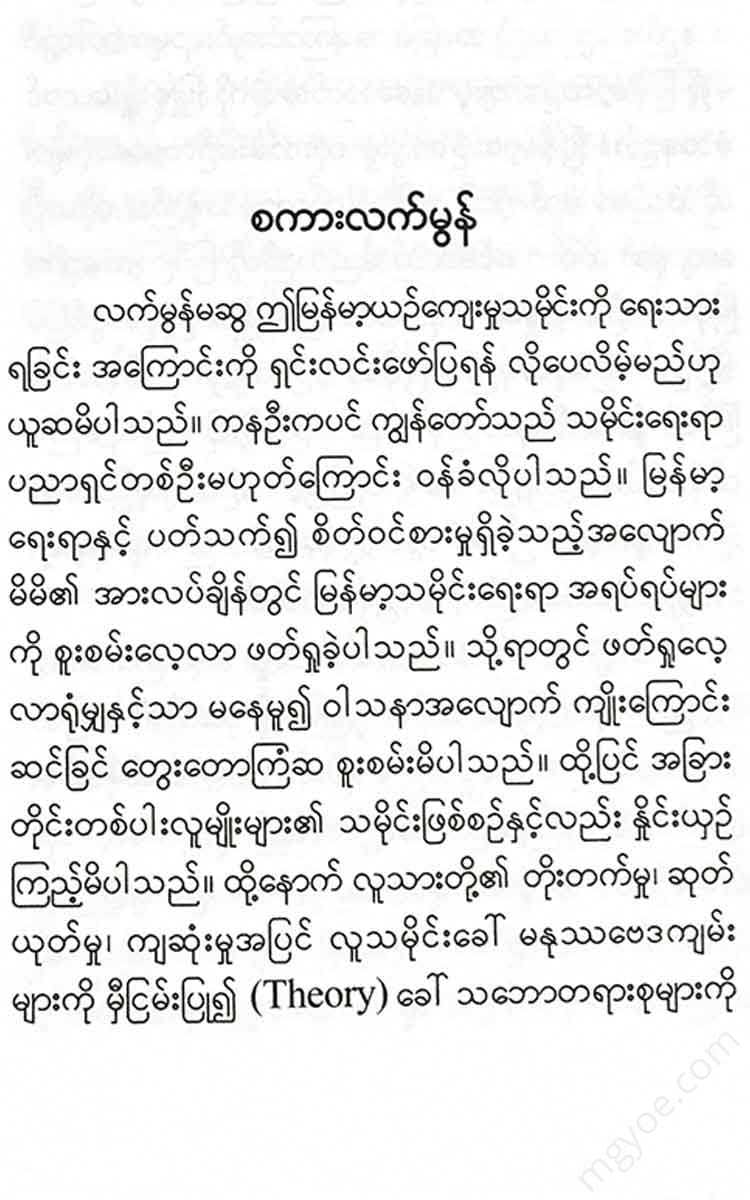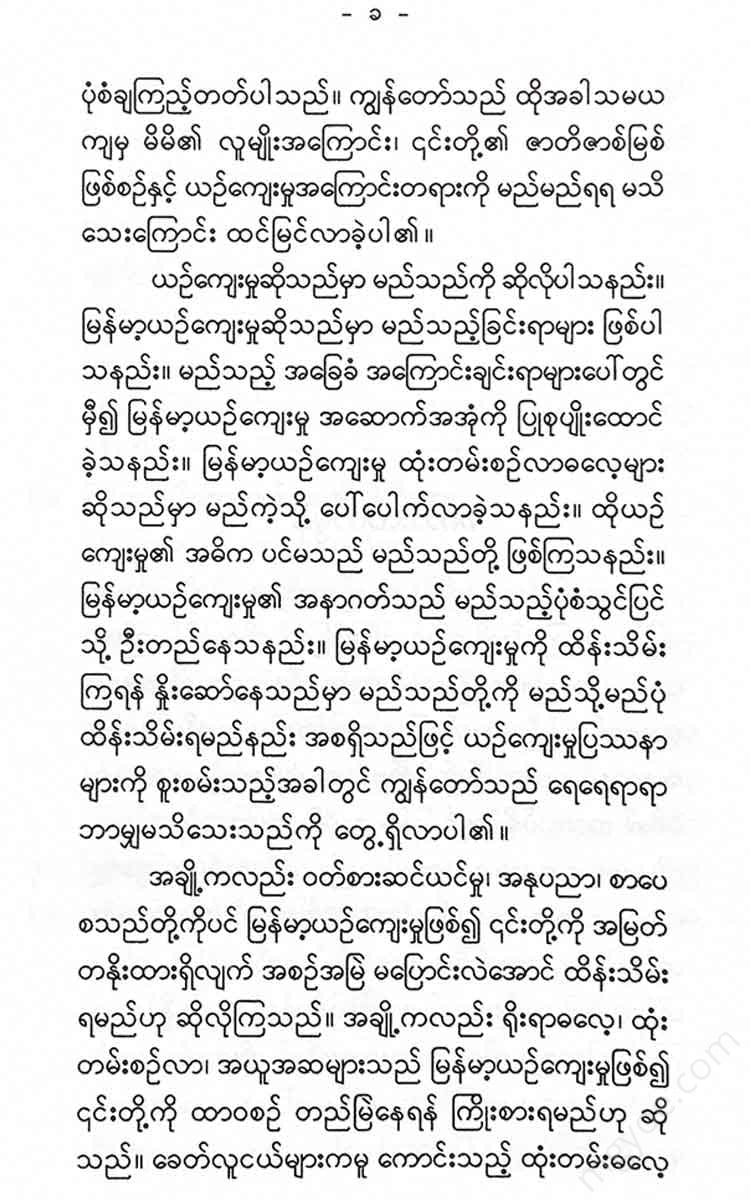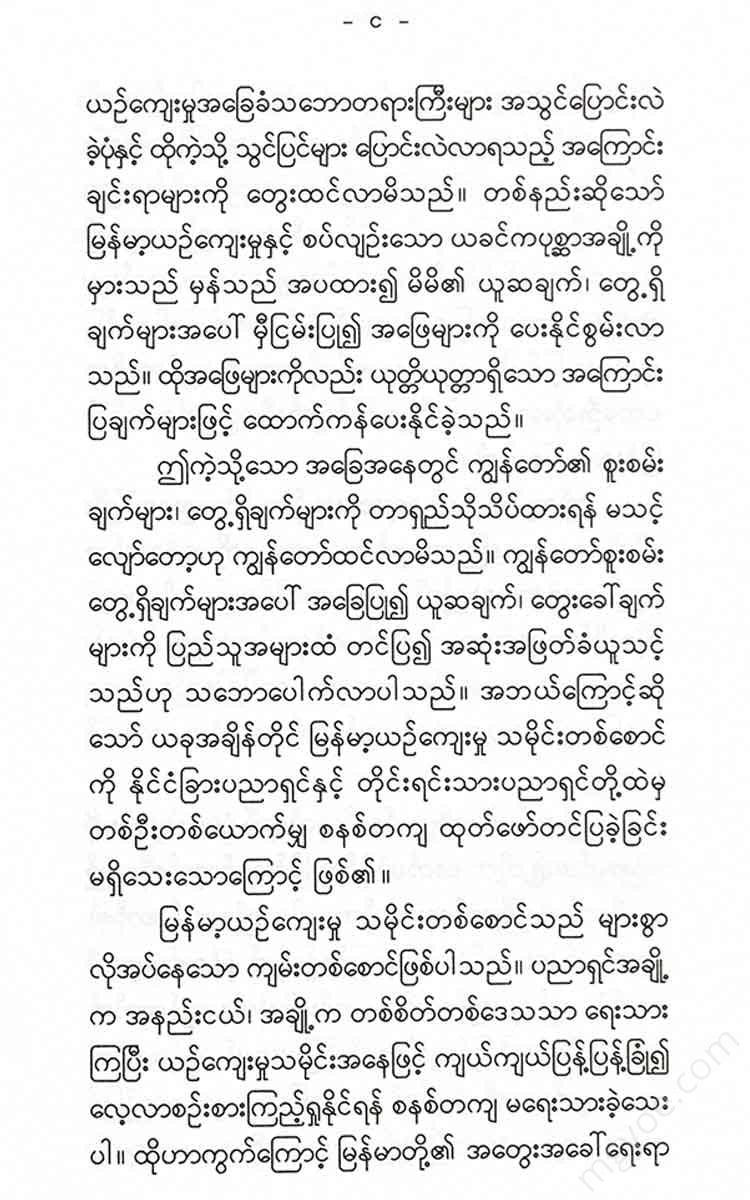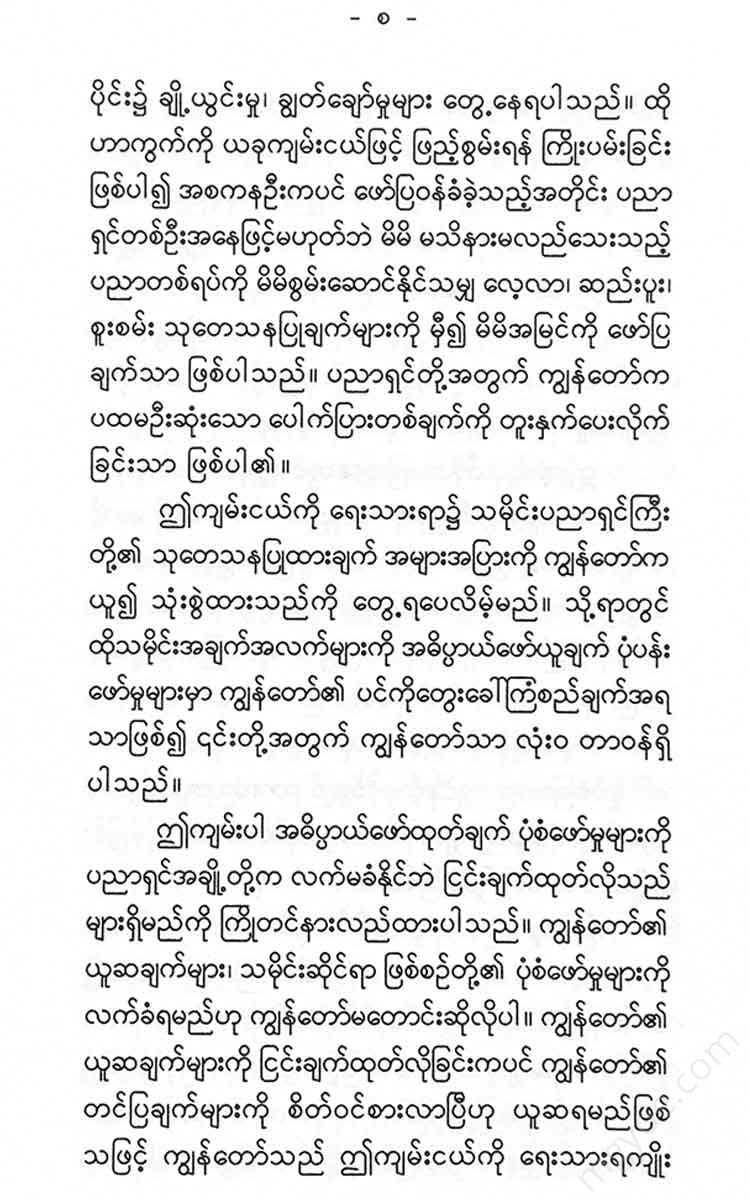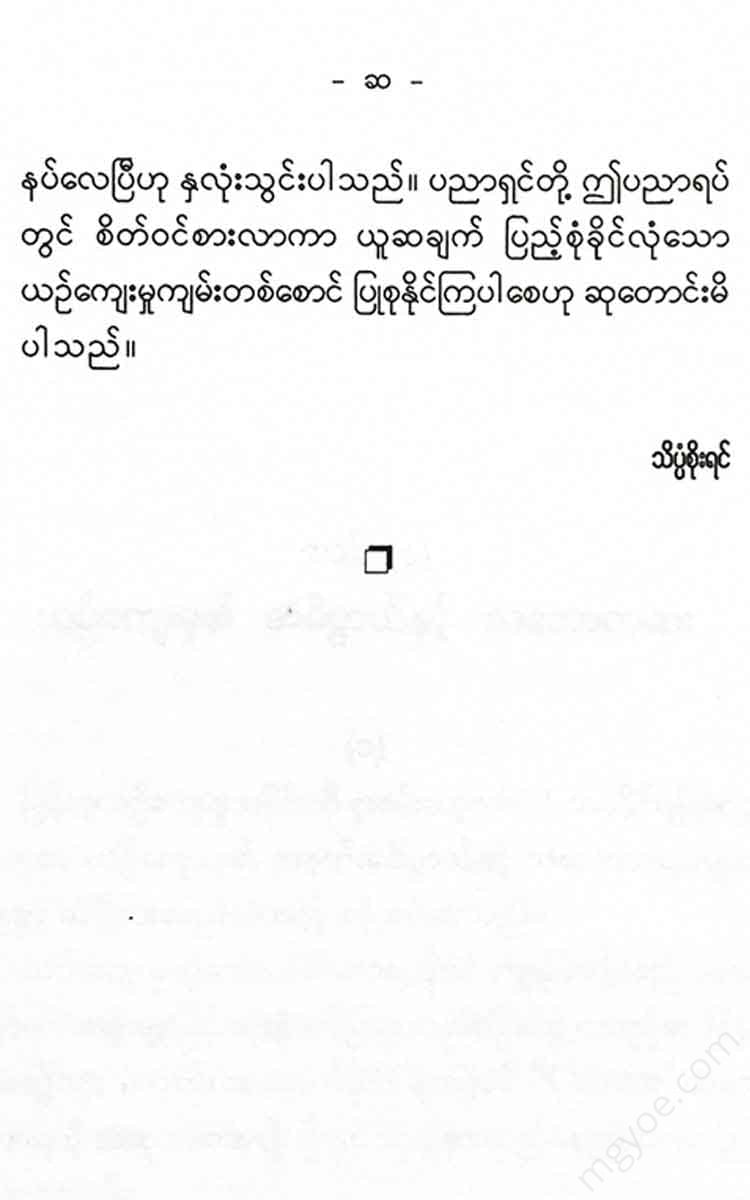စိတ်ကူးချိုချိုစာပေ
Science - History of Myanmar Culture
Science - History of Myanmar Culture
Couldn't load pickup availability
(1)
In order to explore and analyze the history of Burmese culture, it is first necessary to accurately understand the meaning and concepts of culture.
We see that the word "culture" is used in various meanings, not only in Myanmar, but also in Western countries, where the word "culture" is still used and understood with various concepts.
However, for researchers who systematically and scientifically study culture in the West, the meaning of the term culture has become more or less precise and the differences are no longer significant.
In Myanmar, the word Culture is translated as မြန်းမ
Only by discussing and thinking about Burmese culture based on fundamentally correct assumptions and meanings can we plan for harmonious progress for the future.
It is a time when scientific research and presentations on Burmese culture are desperately needed, especially for the youth who will dominate the future, so that they can think, devise, invent, and create the cultural structures that must be nurtured in their own time.
(2)
In explaining the meaning of culture, it is important to first note that the term "culture" is a translation of the English term "culture".
In English, there are words with similar meanings, such as (Culture) and (Civilisation), but Burmese people generally interpret both the words Culture and Civilisation as ສາຍທາຍທາຍ. Therefore, when using the word ສາຍທ
In fact, in English, the terms Culture and Civilization are commonly used interchangeably. However, in the study of human history, the two terms have been interpreted to be distinct. In short, Civilization refers to the next higher stage of Culture. In other words, Civilization is a special aspect of Culture that has progressed to the next level.
Culture is a part of the natural environment that people create for themselves. Culture is the way a people live their lives. The way people interact, live, eat, and move within a society is the cultural system of a people.
Humans are people who live in the natural and social environment. In other words, humans are people who interact with each other in a group. In this way, people interact with each other and make a living in a group, and social rules are needed for their relationships with each other. These rules and regulations are agreed upon by everyone who comes into the society and must be taught and practiced.
It is because of the establishment of such rules and regulations that the social environment created by people themselves has come into being. The social environment created by people and the people who lived and worked in that environment, as well as the knowledge, skills, and methods of working that have been accumulated, as well as the physical and mental thoughts, ideas, and creations that have been accumulated and accumulated by the human society in stages, is called culture.
There are two aspects to that culture. One aspect is related to the physical, and the other aspect is related to the mental.
The physical culture sector includes material objects such as buildings, clothing, tools, and implements (e.g. axes, arrows, and bows), while the psychological culture sector includes ideas, thoughts, ways of thinking, behaviors, values, and mental creations such as writing and literature, science, social systems, legal systems, and religious beliefs.
Therefore, culture is the set of rules, laws, customs, and behaviors that people have developed and cultivated in their own way, and that have been gradually preserved and accumulated within that society, in order to enable people to live in harmony with each other while modifying the natural environment and building their lives in harmony with that environment.
It is only the knowledge, skills, attitudes, experiences, ideas, concepts, and creations of ideas. In short, culture can be called the way of life of a people.
(3)
This book is only a history of Burmese culture and is not intended to be a comprehensive explanation of cultural concepts. It is intended to provide an understanding of Burmese culture through a historical perspective.
The culture of a nation is the experience that has been cultivated by that nation in the past and present. In other words, all traditional cultures are a collection of behaviors that they have adopted in the past. Therefore, in order to understand a culture correctly, it is necessary to study and examine all the events of that nation's past to the fullest extent possible. It is impossible to see a culture clearly without looking at the past. In other words, the characteristics of a culture, its growth, survival, and decline, can only be seen in the light of history.
Many people view culture as nothing more than traditional customs and traditions, and they want to treasure and preserve them forever. They do not realize that culture is constantly changing in its physical form as it moves from the past to the present and from the present to the future. This inability to see culture is due to the inability to see it from a historical perspective.
Culture is like a stream, always changing. New things arise and old things die out. The stream itself may not change much in form, but the water in the stream is constantly changing.
The basis of culture is the economic form of people's material livelihood. That is, the system of production by which people make a living determines the appearance and characteristics of culture.
